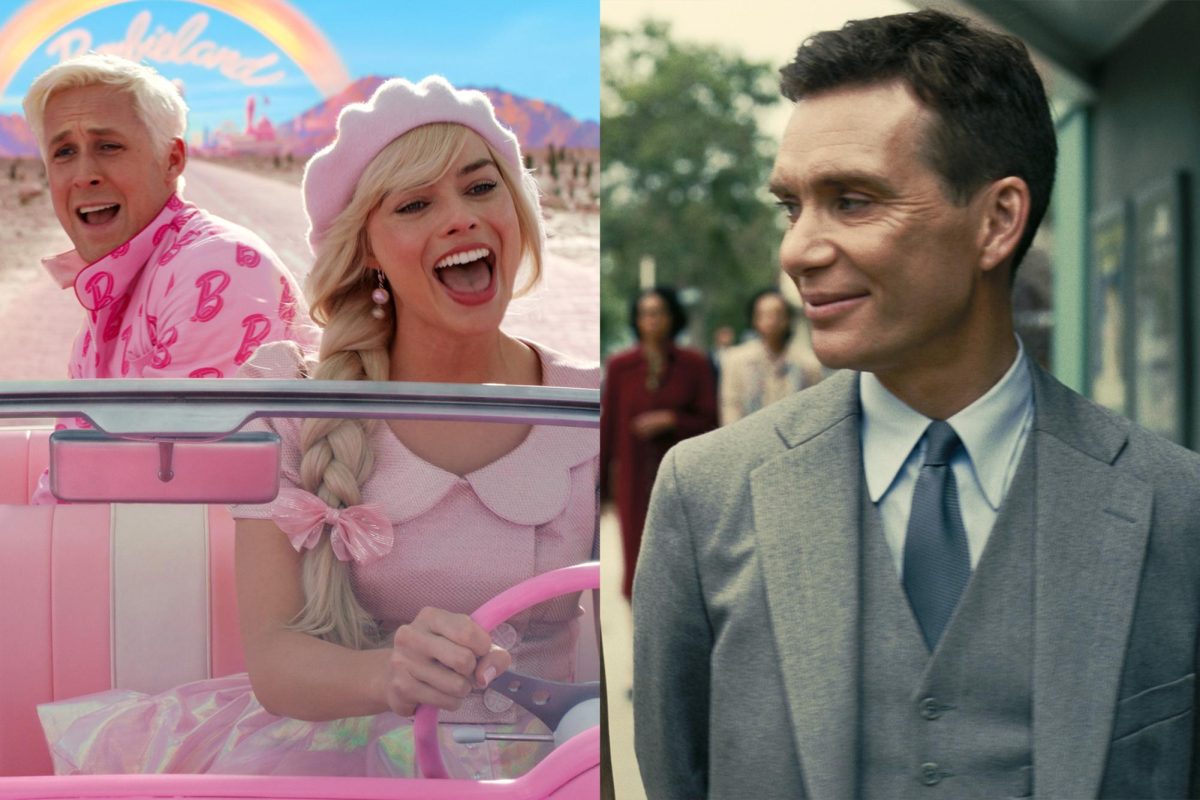On July 21, in the heart of summer break, two films premiered so entirely different from each other that they ended up being bound together in the pop culture zeitgeist.
Those films, “Barbie” and “Oppenheimer,” would be affectionately lumped together as “Barbenheimer.” Each would have made an impact on their own, but combined they became an absolute powerhouse in Hollywood. It is worth analyzing how two deeply contrasting films became a prime example of perfect marketing in the internet age.
The best way to understand “Barbenheimer” is to start by looking at the films on their own.
“Barbie” was expected to be a comedic, family-friendly film that we would all see once or twice and then forget about. While it certainly was those two things, it was also a well-written and extremely well acted analysis of how American society affects women, the patriarchy, and pursuit of equality. This surprising emotional maturity of the film, directed by Greta Gerwig, set it apart from everything else and made it a must see.
On the other hand, “Oppenheimer” was an expected slow burn with philosophical messages, complicated characters, and experimental direction by Christopher Nolan. The story of one of the most controversial men in history was told masterfully, which was aided by the distinct character writing that made every character feel like a real, imperfect, interesting, and a developed human. Additionally, the cinematography and score that have quickly become iconic carried the movie to becoming an atmospheric masterpiece.
Praise for both movies has been unanimous among critics and audiences alike. What is more interesting is how surprisingly similar these films are. Both featured an iconic subject, unique cinematography and soundtrack, and discussed significant social issues that are present in our modern day.
However, the real power from these two films came from their difference in approach. Even down to the colors, “Barbie” is a bright pink film while “Oppenheimer” is largely muted. “Barbie” is a more lighthearted approach to social commentary while “Oppenheimer” is a more grim and pessimistic film, considering its subject. Their abundance of technical similarities accompanied by their starkly opposed forms of telling their stories made them feel like a joint experience.
The two films chose to compete head on. Announcing their opening night to be on the same date was only the first step in a marketing campaign for the ages. The movie’s differences quickly became the subject of numerous memes, pointing out the intense contrast in the two films. Feeding into it, prominent cast members from both films such as Margot Robbie, Ryan Gosling, and Cillian Murphy would visit the early screenings of their “opponent”. The running joke was a self-sustaining advertisement for both movies that would make them the biggest event in the box office, possibly for the whole year.
Both films were insanely successful. “Barbie”’s turnout put the film in the top 20 highest grossing of all time, and the highest grossing film in history to be directed by a woman. “Oppenheimer” surpassed a $500 million box office mark. It is safe to say both films are on track to award season with high expectations. A lot of this success can be attributed to viral marketing, and the tandem nature of these two starkly different films shocked the world with its monolithic achievements; achievements that will undeniably keep them in the public spotlight for years to come.




